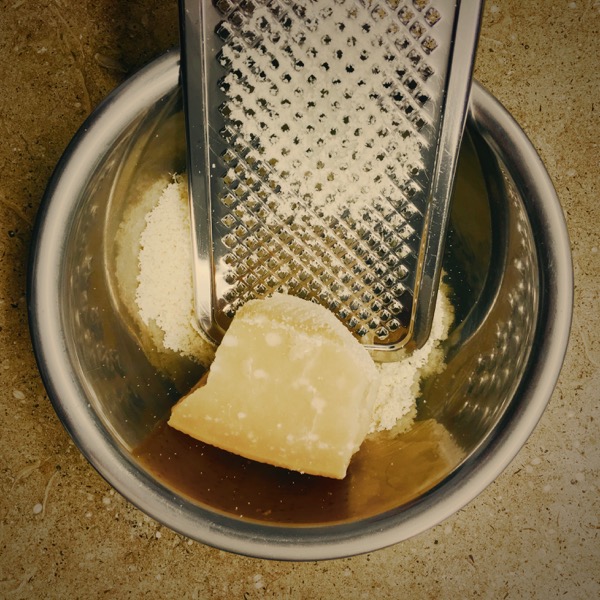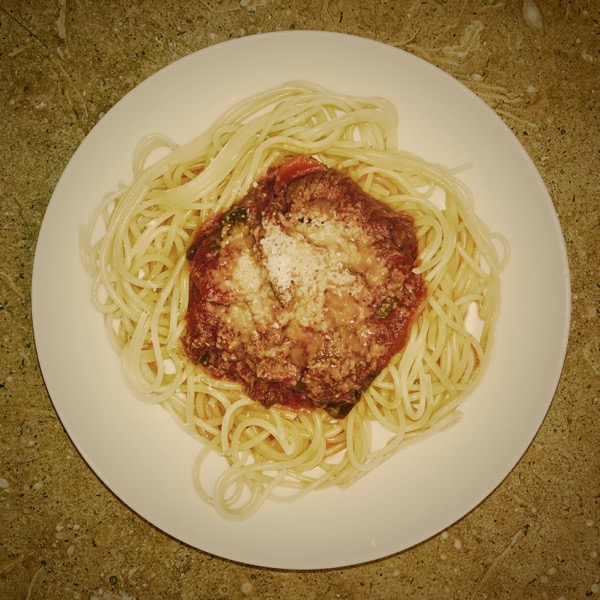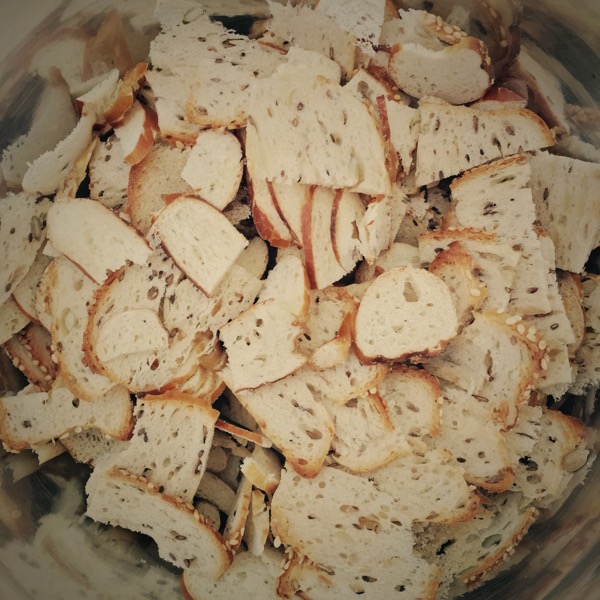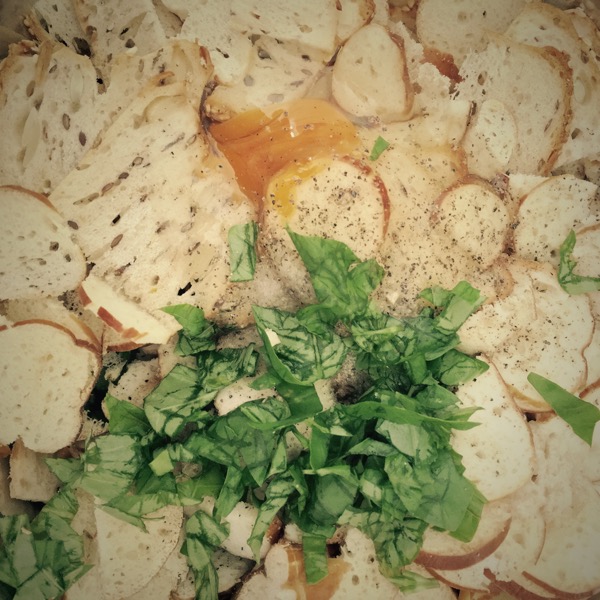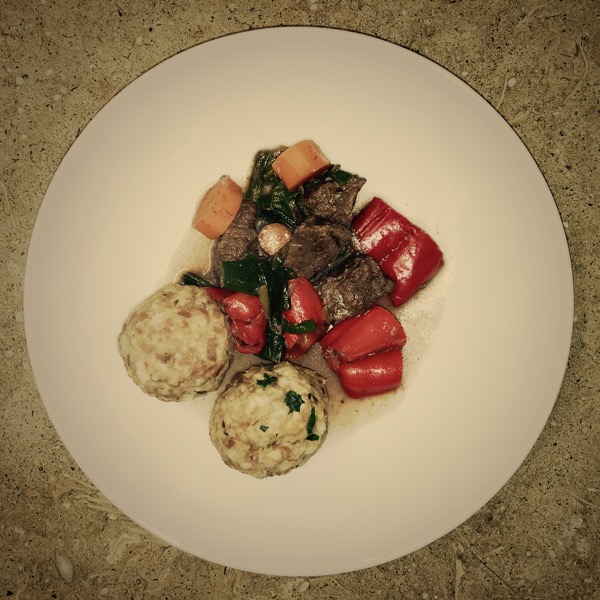So I made beef stew to have something to go with what was left from yesterday’s Brezenknödel. The best thing about stew, however, is dinner the next day. The leftovers are easily transformed into ragù, as Italians refer to meet sauces for pasta where the meat is broken down into tiny bits. The most famous kind of ragu is “alla bolognese,” which is prepared with ground meat: in the olden days, a mix of beef and pork, today often just beef. But stew is also a great starting point for ragù. Just put the pieces of meat on a plate, cut them into thin slices, and return them into the pot. Then add some kind of tomato, fresh or from a tin or even concentrated tomato paste, whatever you have at home. Plus a bit of red wine and some vegetables. Again, pretty much anything works. I took carrot and fennel, cut into very small cubes so that they blend with the meat and tomatoes upon further cooking. Though ragù can be prepared quickly, it will be even more fragrant if you give it a bit of time.
While my ragù was simmering on the stove, I prepared the first course with more leftovers from yesterday: two Brezenknödel, dumplings made from Bavarian brezen. The first time I encountered Brezenknödel was at a family celebration in the Austrian alps. They weren’t served as dumplings, but thinly sliced as a salad. So this is what I tried today, and I liked it a lot: layers of Brezenknödel with some first rate tomatoes I got at the farmers’ market.
Next comes the only bit of hard work for my pasta con ragù dish: grating parmigiano. I often buy grated parmigiano, because I find it so tiresome to grate enough of it (everyone I know loves parmigiano, so it’s not easy to have “enough”). But the taste is of course even better if you’re grating it right before you serve the food.
Now everything was ready for the main dish: pasta con ragù con parmigiano.
But since it was all just prepared from leftovers, it wasn’t all that much. So I added a healthy dessert, the kind of dessert one can eat in addition to having some chocolate later at night. Strawberries with delicious Bavarian yogurt.


